Considering the enormous size of these utensils, kettle, pie dish and copper pitcher, one would believe to attend the preparations of the snack of Gargantua. A tea cart, a monster cake and a no less disproportionate milk jug.
In the vast kitchen of this charterhouse, the housekeepers busy themselves with this type of utensil to prepare meals for the masters of the place. Over three or four generations, they all live under the same roof and there are at least a good twenty at the table every day.
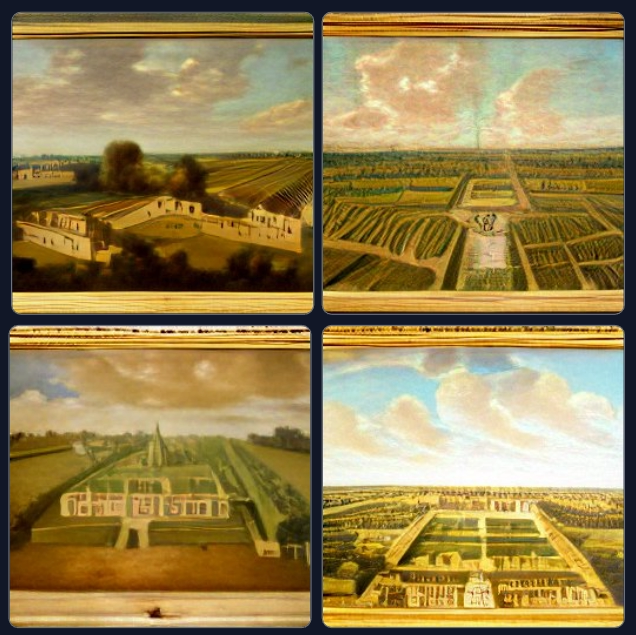
In reality, these rare red copper accessories come from a wealthy family of winegrowers, formerly at the head of a renowned cru in the vineyards of the Médoc. A “Château” as the name suggests, although in this case this mansion was typically presented in the 18th century as a single-storey charterhouse, housing vaulted cellars specially designed to age fine wine.
Placed chronologically between the ancestors and the newborns, men of working age then occupied several functions. There is the estate manager, the cellar master, the wine merchant. All live and work in residence. Outside, beating the countryside, one of the sons is a doctor, while another is destined for the Bar and joins the Bordeaux Bar Association.
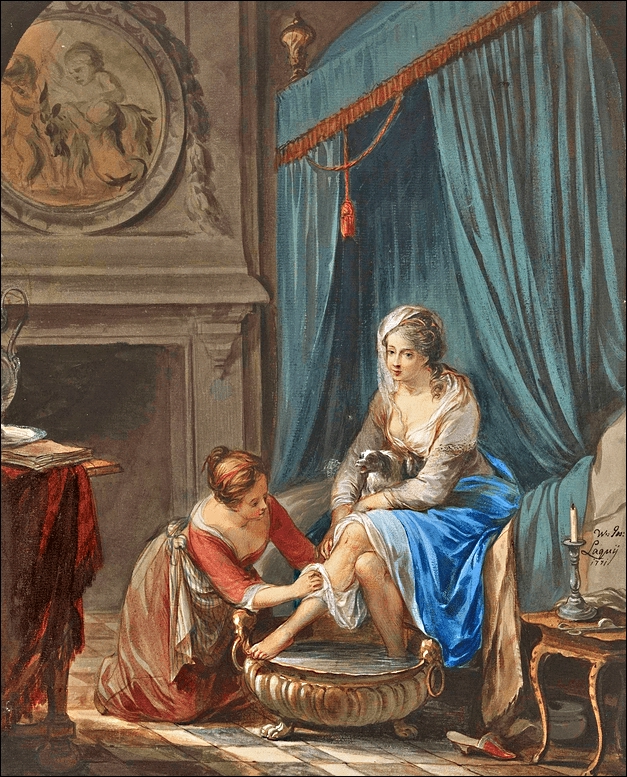
Painting of a young woman making her toilet, produced in 1771 by Willem-Joseph Laquy. Collection of the Rijksmuseum, Amsterdam, Licence cc-by-sa-4.0
In terms of food, these bourgeois families benefiting from a rural base were self-sufficient in the 18th century, thanks to the famous “borderie” or “closerie” integrated into the property. Combining orchards, vegetable gardens and poultry enclosures, these 10 to 15 hectare farms were generally lined with live fences made up of hedges of trees or lined with wickerwork fences, both erected to avoid ransacking and looting.
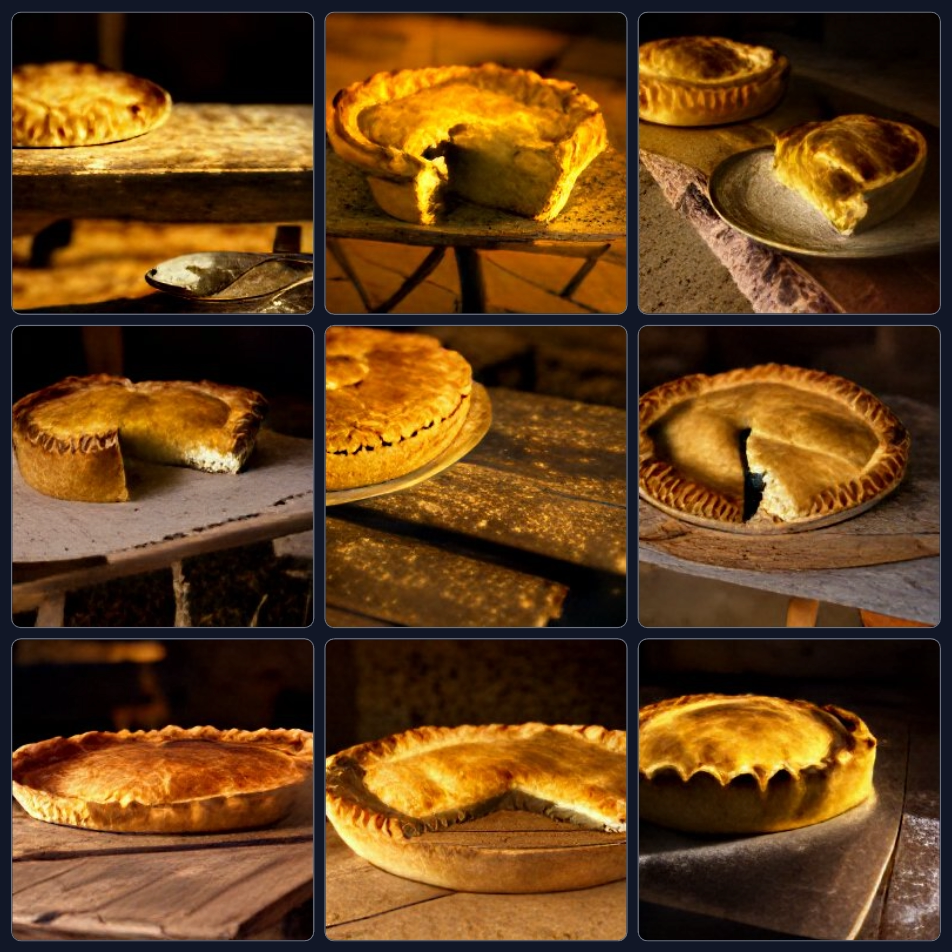
As for the so-called red copper utensils, they each have their own particular function.
- The large kettle heats water for the kitchen as well as for everyone’s bath, thanks to its large capacity.
- The pie dish (tourtière) is used to cook the famous Périgord pie (tourte périgourdine). In the hollow of a thick dough of corn or rye flour, the locals lay out what is found on all farms, even the most modest, and in all seasons. Bacon, salsify, potatoes, Jerusalem artichokes. The more fortunate add quarters of confit poultry. Once closed, the meat pie is placed in the hearth and covered with hot embers. Cooking is done from above as well as from below, which is why the copper pie dish is considered the ancestor of the oven.
- As for this large copper pitcher, it was used to measure the wine at the time of the trade. Called decaliter, it can indeed contain precisely up to 10 liters of wine. This capacity was certified by an inspector who affixed his stamp to the top of this pitcher, thus validating its measurement value.
Kettle in Red Copper – 18th century – South West – [MP035]
Kettle dimensions:
Height: 56 cm, Width of the spout at the handle: 72 cm, Diameter of the container: 44 cm.
Reference: [MP035]
Red Copper Pie Dish – 18th century – South West – [MP036]
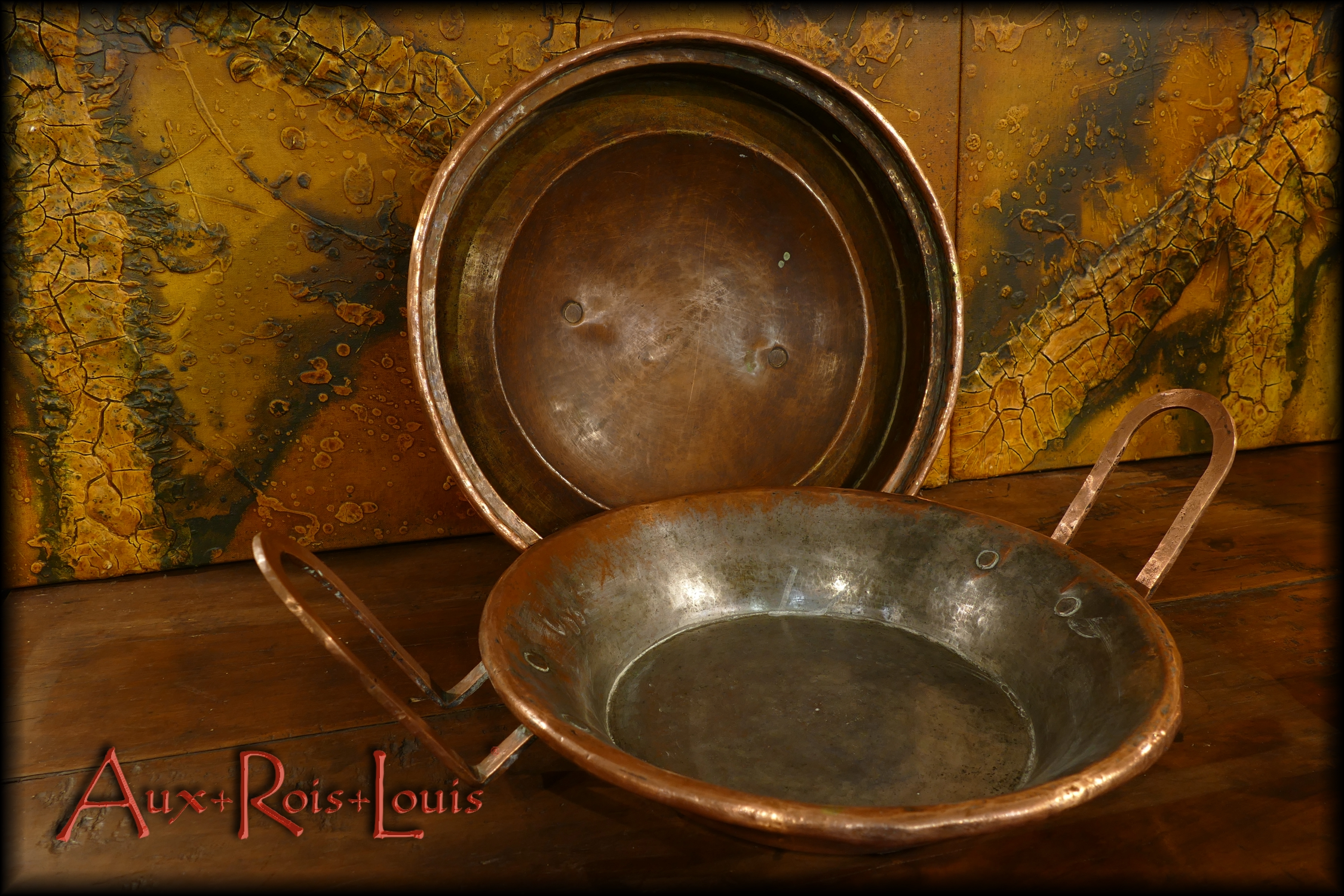
Pie dish dimensions:
Height with lid: 24 cm, Width with handles: 62 cm, Diameter: 44 cm
Reference: [MP036]
Decaliter Pitcher in Red Copper – 18th century – South West – [MP037]
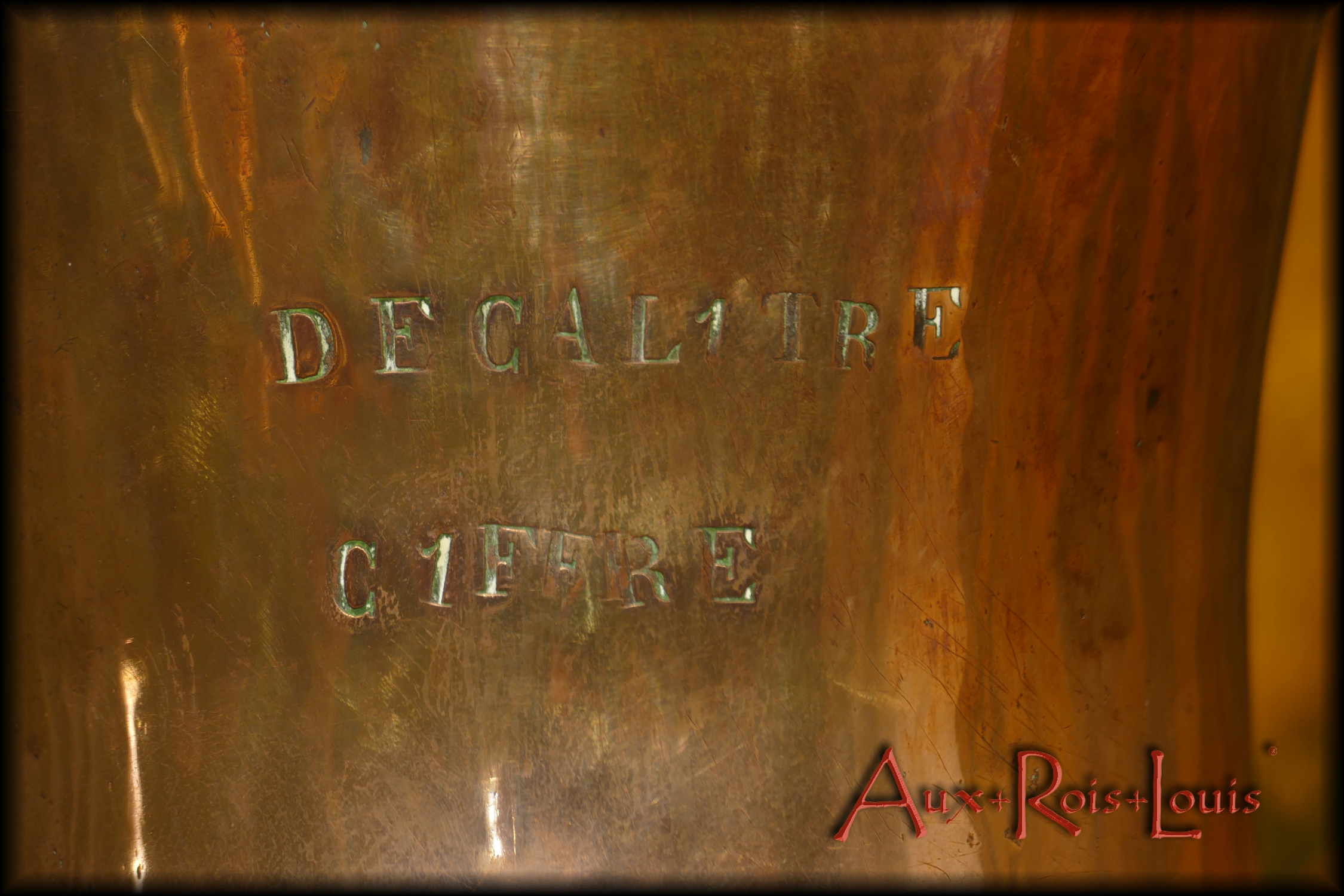

![Kettle, pie dish and decaliter jug in red copper – 18ᵉ century – South West – [MP035] [MP036] [MP037] Three copper containers of exceptional size: an enormous kettle, the matching pie dish and an equally imposing pitcher. All are in red copper and date from the 18th century, a period during which they were manufactured using the same processes in the South West of France.](https://www.aux-rois-louis.com/wp-content/uploads/2022/10/ME035-036-037_426-1200x600.webp)
![Kettle, pie dish and decaliter jug in red copper – 18ᵉ century – South West – [MP035] [MP036] [MP037] Three copper containers of exceptional size: an enormous kettle, the matching pie dish and an equally imposing pitcher. All are in red copper and date from the 18th century, a period during which they were manufactured using the same processes in the South West of France.](https://www.aux-rois-louis.com/wp-content/uploads/2022/10/ME035-036-037_408.webp)
![Kettle in red copper – 18th century – South West – [MP035] This large copper kettle made in the 18th century in the South West of France was used, in a Médoc wine estate, to heat water for the kitchens as well as for the baths of the whole family.](https://www.aux-rois-louis.com/wp-content/uploads/2022/10/MP035_410.webp)
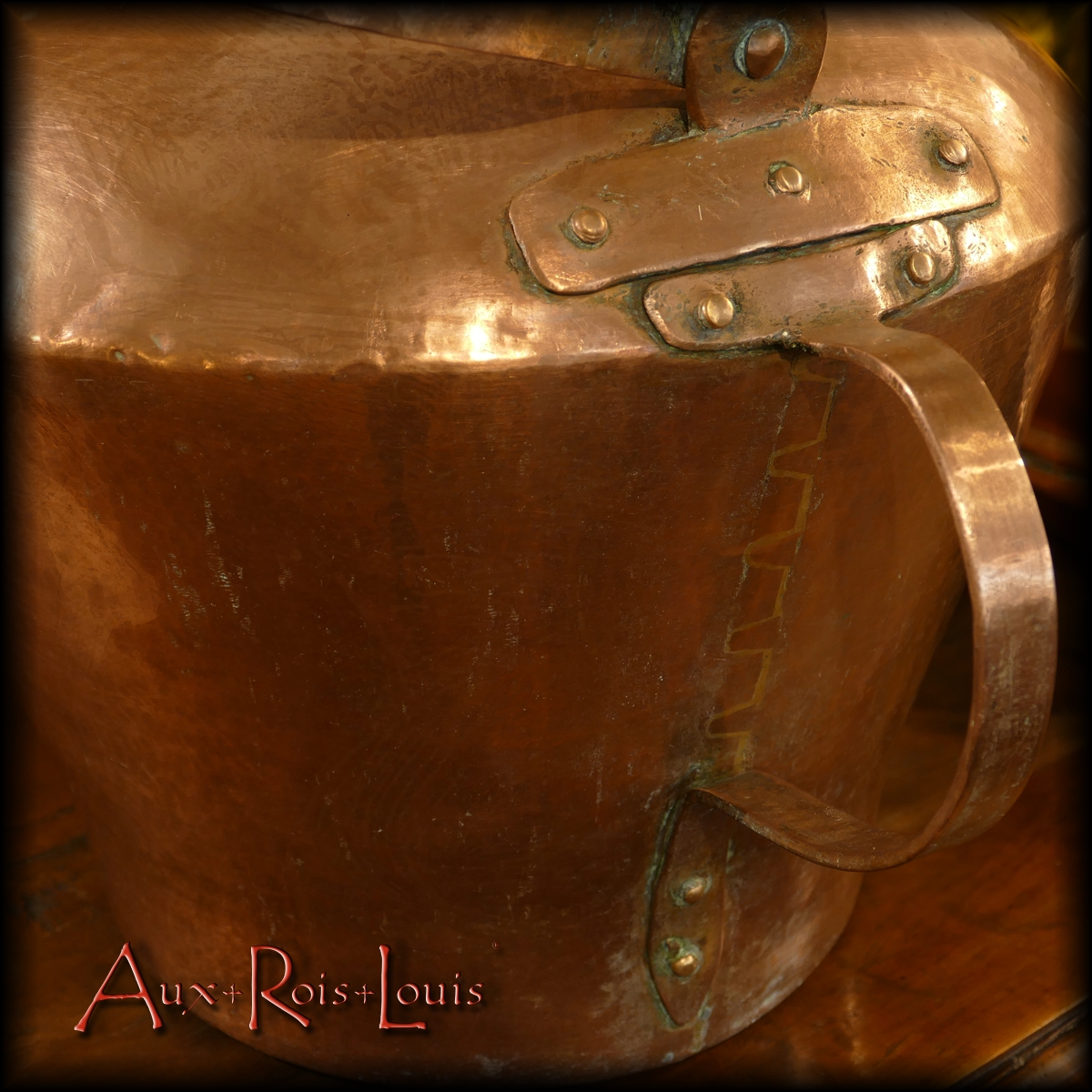
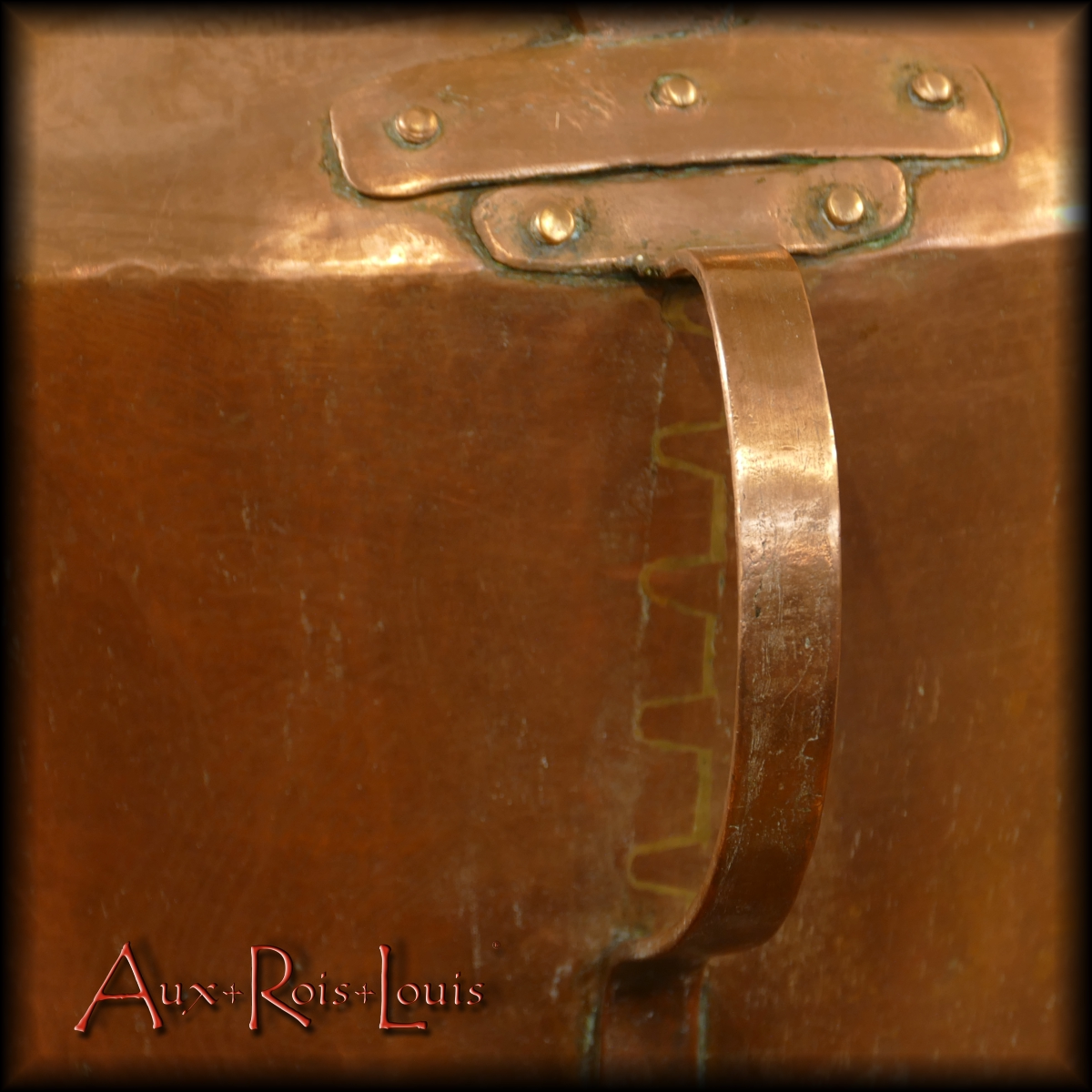
![Red copper pie dish – 18th century – South West – [MP036] This red copper pie dish is the ancestor of the modern cooker oven. In the past, we had a homemade pie dough inside. The garnish was basically bacon, potatoes, salsify and Jerusalem artichokes. Everything was covered with a second layer of dough before baking.](https://www.aux-rois-louis.com/wp-content/uploads/2022/10/ME036_417.webp)

![Decaliter pitcher in red copper – 18ᵉ century – South West – [MP037] This large red copper pitcher was used to measure the wine when selling it. Named decaliter, it can indeed contain precisely up to 10 liters of wine. This capacity was attested by a controller who affixed his punch on the top of this pitcher to validate his measurement value.](https://www.aux-rois-louis.com/wp-content/uploads/2022/10/ME037_423.webp)